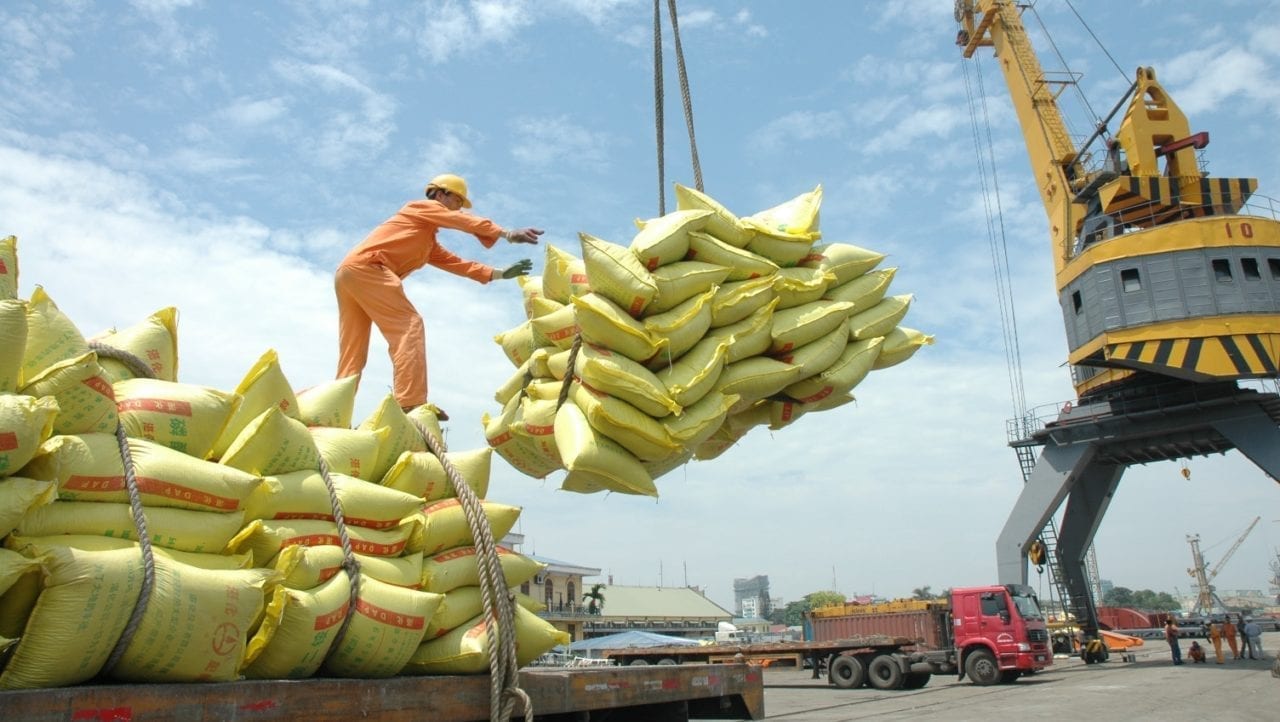
Vietnam’s 5% broken rice price has fallen to US$434 per ton, the lowest in four years, posing challenges for businesses and farmers.
The price of the country’s 5% broken rice is now lower than that of its major competitors such as Thailand ($479), India ($440), and Pakistan ($448) per ton, according to the Vietnam Food Association.
Hoang, a rice farmer in Can Tho City, expressed concerns about the winter-spring rice crop, which will be harvested after Lunar New Year (Tet) that peaks on Jan 29.
He worries that continued price declines could result in losses for his family due to high input costs.
“The sharp fall in rice prices has made traders hesitant to sign new contracts with farmers,” Hoang said.
“Last year, at this time, traders were placing high deposits continuously, but now, no one is asking to buy rice. Many traders have already started their Tet holiday early.”
A leader of a rice exporting enterprise in An Giang revealed that his company is focusing on fulfilling previously signed contracts. New contracts for the first and second quarters of 2025 have been delayed.
“Rice prices are fluctuating continuously, and enterprises are wary of potential losses if they buy rice at high prices,” he explained. “We are closely monitoring the market and actual demand to make reasonable purchasing decisions.”
The sharp decline in Vietnam’s rice export prices is attributed to several factors, including major rice-importing countries adopting policies to reduce imports, avoid high-priced purchases, and, in some cases, even announcing plans to halt rice imports in 2025.
A representative of the food association, said the Philippines and Indonesia, two of Vietnam’s key rice buyers, increased their imports in 2024 to secure short-term inventories for food security. As a result, they are currently not rushing to buy Vietnam’s rice and are waiting for prices to drop further.
India’s recent decision to resume rice exports, coupled with its abundant supply and competitive pricing, has also significantly impacted the global market, including Vietnam.
Reports revealed that the Philippines is negotiating a contract to import more rice from India.
Private buyers in the Philippines often purchase Vietnamese rice with limited quantities because of financial balance, capital turnover or bank debt repayment, further cooling down the market.
In the coming time, as the 2024–2025 winter-spring crop reaches its peak harvest, rice prices are expected to face further downward pressure.
According to the U.S. Department of Agriculture, global rice supply is expected to increase significantly this year, with production projected to hit a record high of over 530 million tons, up 3.1 million tons from the previous forecast.
The rise in supply is largely attributed to India lifting its ban on non-Basmati white rice exports and expecting to export 21–22 million tons of rice in 2025, an increase of 5 million tons compared to 2024.
In addition to India, other countries such as Egypt, Guyana, Japan, and Venezuela are also contributing to the increased production. However, the Philippines stands out as an exception, with its output forecast to decline.
To maintain and expand market share, rice-exporting countries will need to adopt flexible market access strategies, focus on improving product quality, and explore new markets.